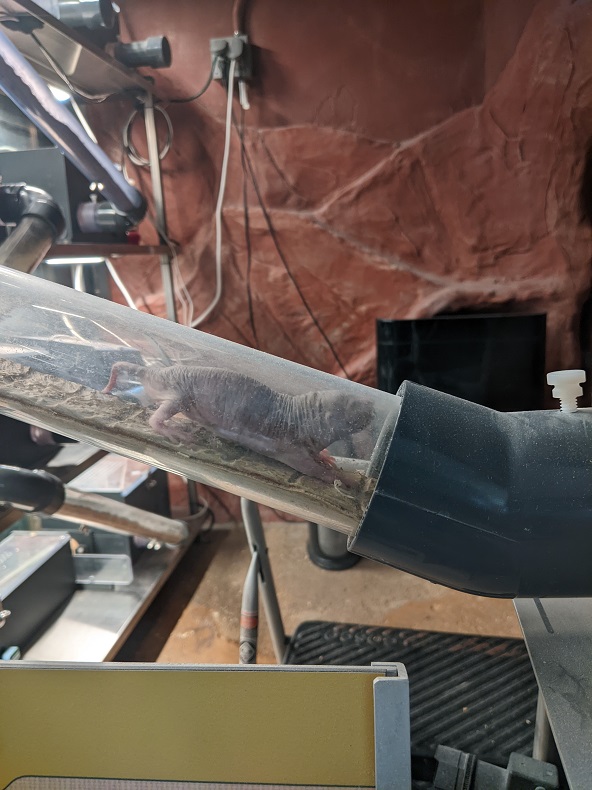
Last weekend I went to the zoo, something I hadn’t done in at least two years and probably much longer. A friend was visiting with her kid, a zoo enthusiast who’d been looking forward to it for weeks.
While at the zoo we saw many wondrous things. Two Asian elephants. A number of surprisingly giant pandas. The murky shadow of a red panda, eating behind a window with too much glare. A couple of river otters, swimming laps in their water. A shockingly fast-moving sloth, roaming the branches of its enclosure. The orangutans high overhead on their tightrope.
But the animal that I keep thinking about? The naked mole-rat. The National Zoo has two colonies of these odd, non-furry critters on display, with their big teeth and their wrinkly skin.
They maybe aren’t the nicest to look at. Not as cute as the wee monkeys that surround them in the Small Mammal House, that’s for sure. My friend’s kid was soon ready to move on. “Helen used to study ants, and these are the mammal version of ants,” his mom explained.
“The mammal version of ants” works for me. Naked mole-rats live in underground colonies in East Africa. (And plastic tubes in Washington, D.C.) Only one female per colony has babies; the rest are raising their siblings. No one knows how long they can live; some of the mole-rats in the zoo are 30 years old, I learned when I looked them up. That’s a lot of years for a rodent.
I find it kind of comforting to think that somewhere, a few miles to the west of here, right now, as I write this and worry about the things I didn’t get done today and the things I have to do tomorrow, a pile of mole-rats is snoozing together in a plastic box, sharing body heat and dreaming about tunnels.
Photo: Helen Fields
The two animals at the National Zoo that always impress my preteen son: the Komodo dragon and the naked mole rats! They are fascinating, crowded into their little knots of bare bodies, sleeping in a tight ball, or nosing along the plastic tubes. (My favorites are the orangutans and the smiling Mata turtle.)